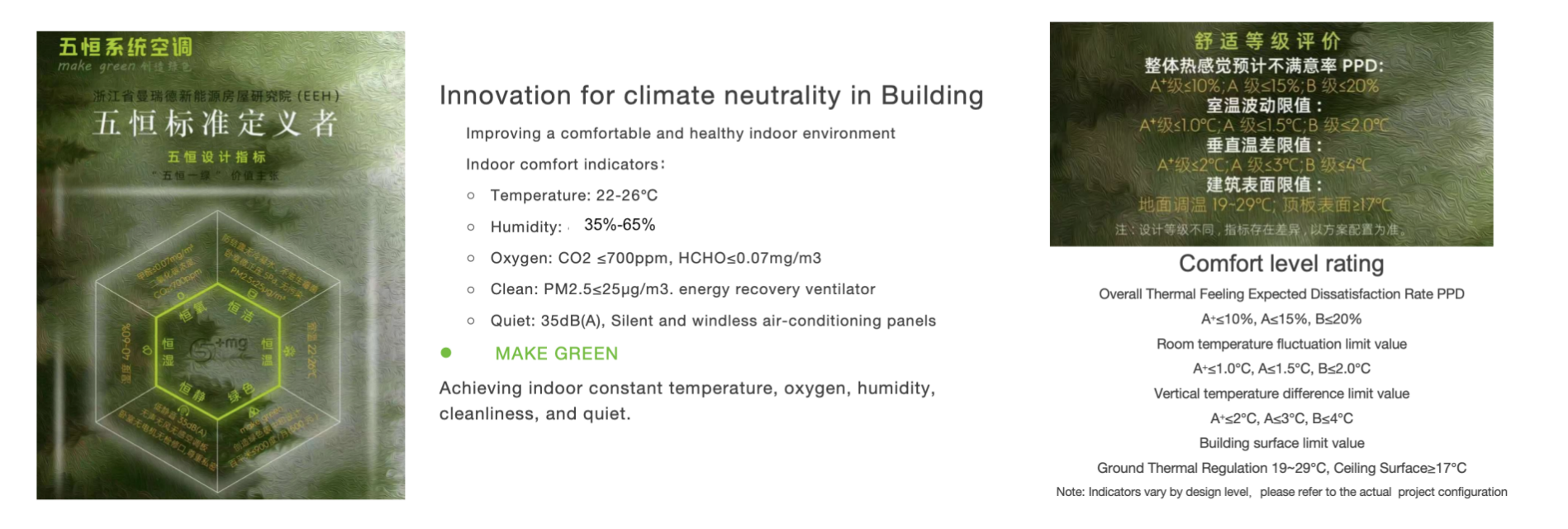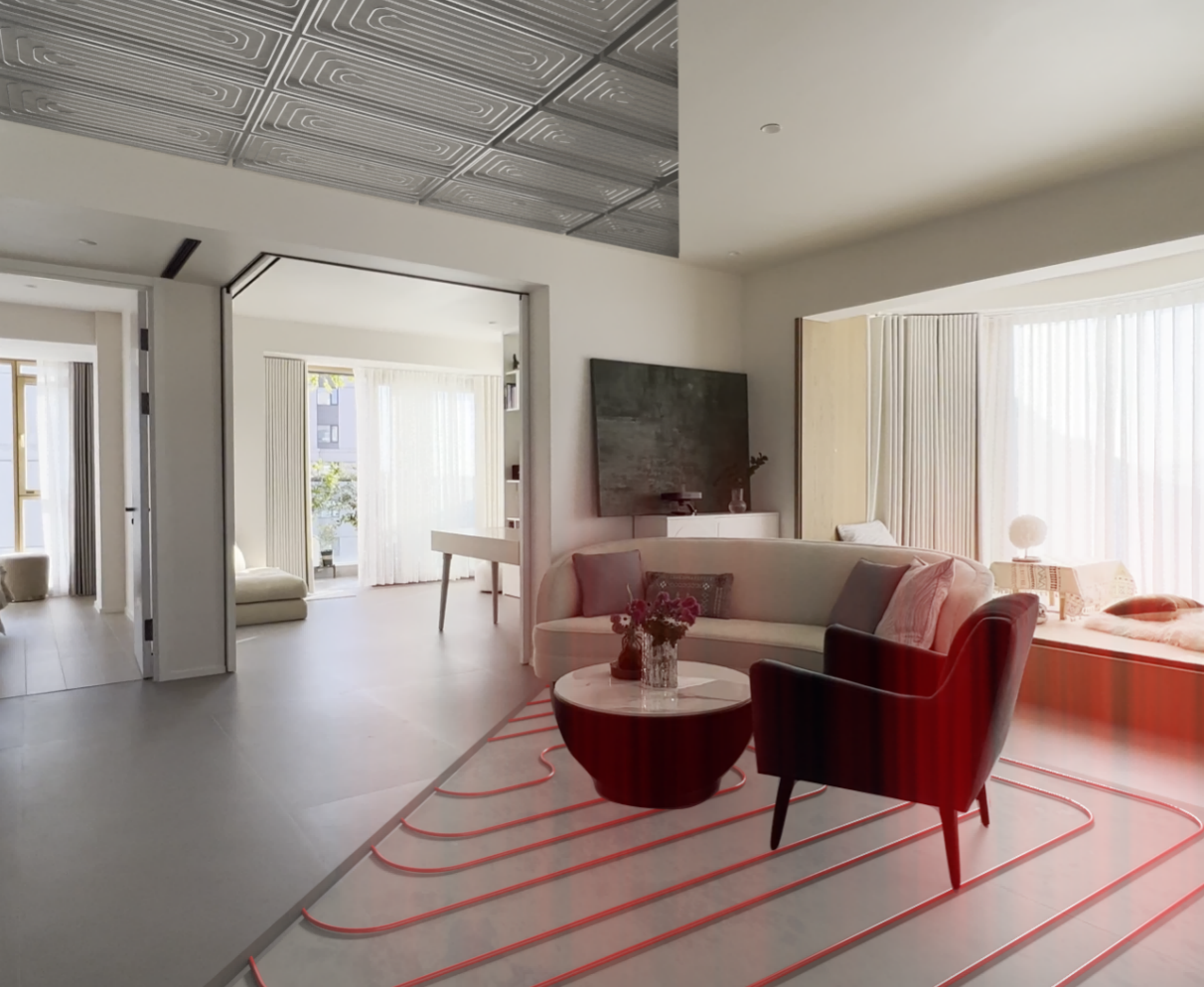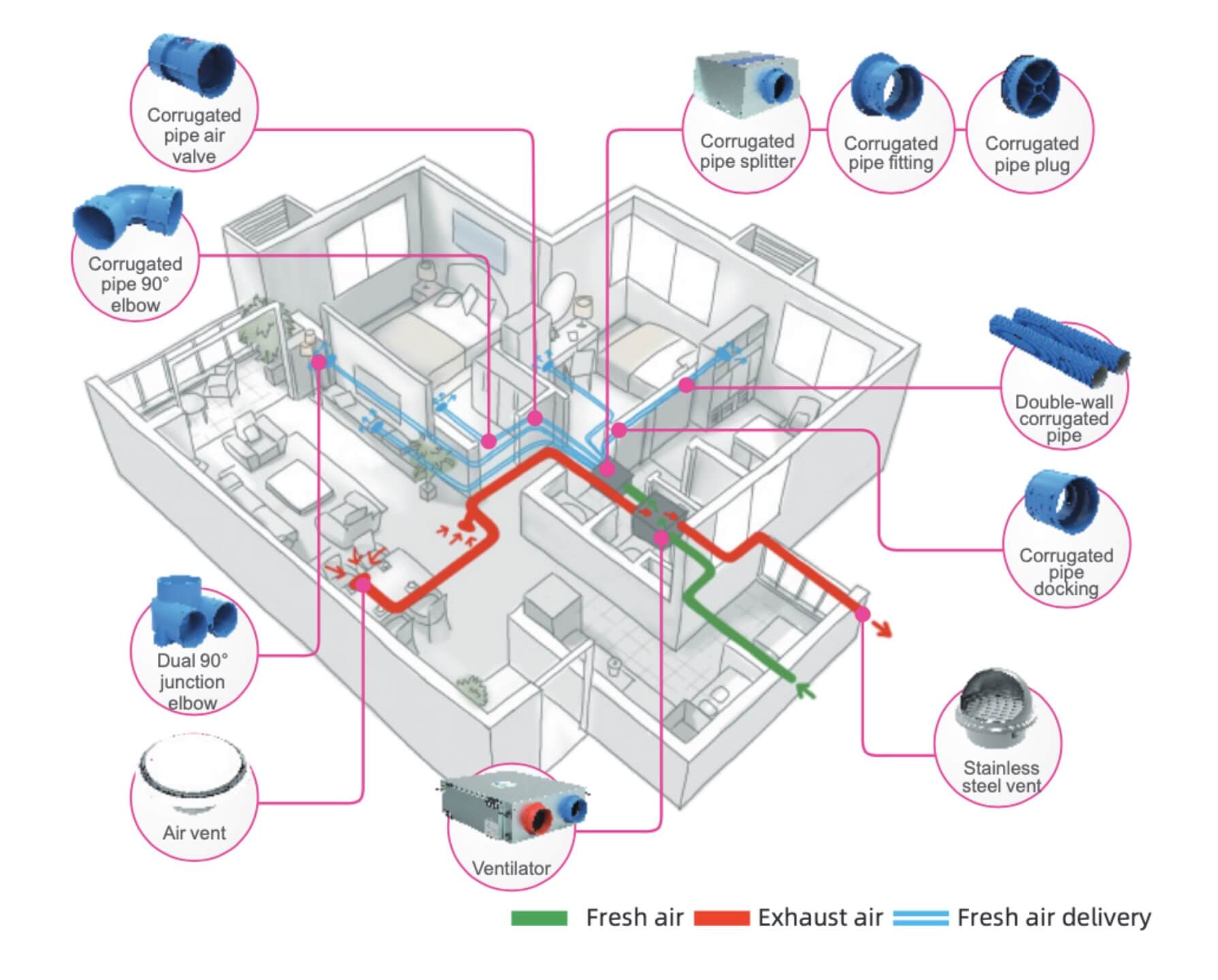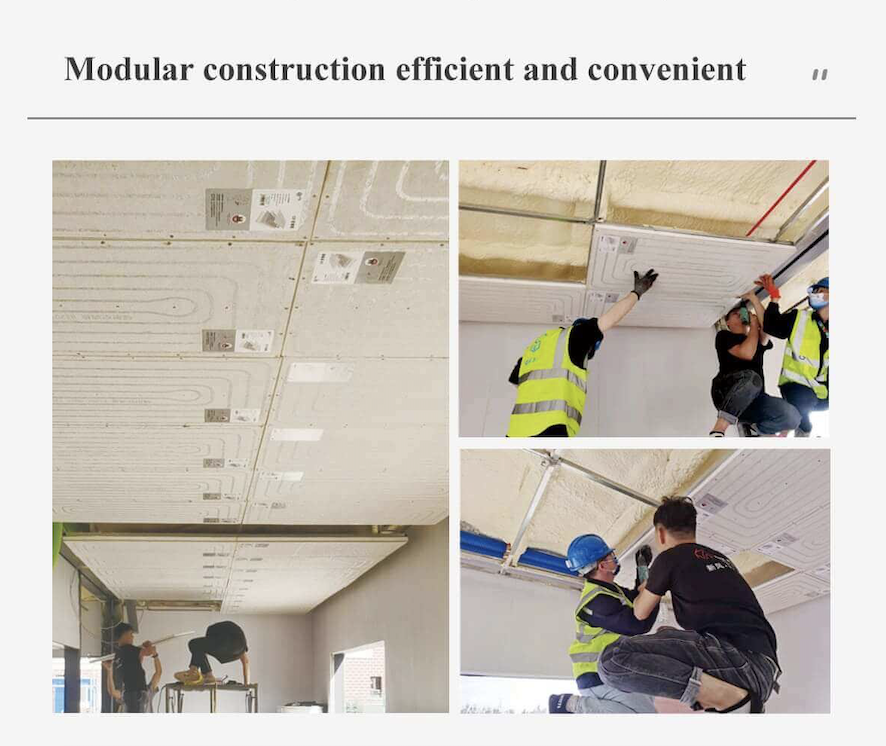The Five Constants system: A Guide to Optimal indoor comfort
views: 3622 time: 2024-05-31
views: 3622 time: 2024-05-31
Are you familiar with the concept of the “Five constants system”?
For those unfamiliar, it’s a crucial framework in the realm of indoor climate control, much like air conditioning and underfloor heating. Contrary to popular belief, the Five Constants are not just abstract notions; they are grounded in national standards and international benchmarks like ISO7730.
The Five constants system, like "air conditioning and underfloor heating," have national standards to follow. While there are many standards for household air conditioning, in reality, it is just temperature adjustment, at most one constant. The Chinese national standard for underfloor heating is called the "Technical specification for Radiant Heating and Cooling" , this seems to have nothing to do with underfloor heating. You cannot say that underfloor heating is also a concept. China's standards for HVAC, thermal and humidity environment, and nearly zero-energy buildings, along with the international ISO7730 thermal comfort standard, are all a reference points for Five constants design standards. They have standards as the design basis, quantifiable criteria, and verifiable results.

Exploring the five design indicators significance in achieving the ultimate indoor comfort.
Constant temperature does not mean it remains unchanged forever! Instead, the temperature design indicator is set at 22-26°C, with the temperature ranging from as low as 22°C in summer to as high as 26°C in winter. You heard it right; this tests the temperature control capability of a set of Five constants. Constant temperature doesn't mean it never changes!
Rather, you can set the temperature to whatever you desire; the elderly may dislike the cold, and children may dislike the heat, allowing for freedom to set the temperature. Constant temperature means maintaining within a small temperature fluctuation range, such as the temperature fluctuation value being less than 1 degree in the "A+ comfort level."
Vertical and horizontal temperature differences are less than 1 degree per meter, and the temperature difference between the air and the wall surfaces is less than 4 degrees. The floor temperature should not be lower than 19 degrees or higher than 29 degrees. Constant temperature itself is meaningless; the pursuit of constant temperature is for controllable indoor temperatures and stable perceived temperatures.

Radiant heating and cooling hydraulic system, building surface temperature adjustable.
Maintaining humidity is not easy, as it involves dehumidification in summer and humidification in winter for year-round humidity control.
1) The design indicator for constant humidity is "relative humidity of 35% to 65%." The quantifiable control indicator is the moisture content of each kilogram of air: greater than 6g in winter and less than 12g in summer.
2) The temperature and humidity in the air are interdependent, making dehumidification necessary in traditional air conditioning cooling processes. Houses with good airtightness and poor insulation are prone to excessive dehumidification, resulting in "feeling cold, dry air, and high electricity consumption."
3) Following the independent control theory of temperature and humidity by Academician Jiang Yi, humidity regulation uses a ventilation system, while temperature control uses a water system; only with two separate systems can temperature and humidity be decoupled and controlled independently. This is the fundamental theory of the Five constants.
4) The essence of constant humidity within the Five constants is to achieve freely controllable room humidity, maintained within a small range, with fluctuations generally around ±5% from the set value of 50% humidity.
5) Dehumidification methods include cooling dehumidification, isothermal dehumidification, and temperature rise dehumidification. Humidification considerations include how moisture is generated, introduced, and delivered to the room; for example, to introduce 5g of water into fresh air, the air temperature must be raised by approximately 12 degrees. Excess humidity can lead to condensation on cold air duct surfaces.
Without water, one can survive for seven days, but without air, survival is measured in minutes. Despite its critical nature, have we paid enough attention to it? Oxygen comprises 21% of the air, while carbon dioxide accounts for less than 0.05%, a difference of over four hundred times; thus, the air is not oxygen deficient. Constant oxygen doesn't mean oxygen deficiency; instead, it aims to create fresh indoor air close to the oxygen levels in nature.
1) Within the Five constants, the design indicator for constant oxygen is "a minimum of 30 cubic meters of fresh air per person per hour, with a bedroom air exchange rate of no less than 1.2 times per hour."
2) The quantifiable control indicator for constant oxygen uses indoor carbon dioxide concentration as a representation: CO2 concentration ≤700ppm; formaldehyde levels should not exceed 0.07mg/m³ as the safety limit. Monitoring CO2 concentration values can be correlated to control the fresh air supply rate.
3) The World Health Organization warns that when the CO2 concentration exceeds 5000ppm, respiratory difficulties, headaches, nausea, and other symptoms may occur.
4) The significance of constant oxygen within the Five constants is to extend deep sleep time and prevent drowsiness in crowded meeting rooms and classrooms, ensuring that occupants remain energetic.
5) Constant oxygen! Proper fresh air design is crucial; a rational airflow distribution design includes exhaust ventilation in negative pressure zones (bathrooms, dining rooms, kitchens) and supply ventilation in positive pressure zones (bedrooms, studies), centralized fresh air supply with concentrated return air, and floor-supply ceiling-return setups; maintaining constant oxygen requires ensuring an effective fresh air replacement volume.

Originating from the "constant temperature, constant humidity, constant oxygen" concept, the first three constant technology residential units in China were the "Beijing Fengshang International Apartments" launched in 2003, comprising 707 small-sized high-rise units with the slogan "farewell to air conditioning and heating," gaining fame in the real estate industry. After evolving from the three constants to the Five constants over 20 years, how do we define constant purity?
1) The first step to maintaining purity is to remove pollutants; using clean fresh air to eliminate outdoor and indoor PM2.5 pollutants. The evaluation criteria for constant purity are: PM2.5 concentration in each cubic meter of air should be less than 25µg, as recognized by the World Health Organization as unpolluted.
Is maintaining purity that easy? No, it is far from enough.
2) For constant purity, bedrooms should have a slight positive pressure of 5Pa to prevent the infiltration of polluted air; airflow should be gentle, with a velocity greater than 0.2 meters per second, necessary for effective air replacement. To achieve this, building airtightness must be improved, with air leakage occurring less than once per hour for a pressure difference of 50Pa between indoor and outdoor spaces.
3) For constant purity, it is essential to install multiple negative pressure exhaust vents in pollution-generating areas like bathrooms, dining rooms, and kitchens, with smart and powerful automatic switching exhaust systems linked to fresh air controls.
4) For constant purity, the design emphasis includes preventing condensation, mold growth, and microbial contamination; we advocate the "no fluorine entry" design principle to prevent the micro-leakage of refrigerants, which poses safety risks.
Have you ever experienced being woken up by cold air from the air conditioning coil or disturbed by the noise from the coil, preventing you from falling back asleep in your bedroom? The evaluation indicator for the constant quietness within the Five constants is that indoor operation should not exceed 35 decibels; it is not just about product delivery but rather ensuring the design maintains consistent quietness throughout the system's extended operation.
1) Comprehensive quiet design:
For centralized systems, place equipment in machine rooms or outdoors; for distributed systems, position equipment on balconies or indoors away from living areas, maintaining a distance from bedrooms; employ vibration absorption, sound absorption, sound insulation, and noise reduction measures.
2) Sleep-friendly quiet design: Bedrooms should be free of motorized mechanical parts to eliminate abnormal noise caused by wear and decay over the product's lifespan.
3) Quiet design for the ventilation system: Main air duct velocity should not exceed 5 meters per second, and air outlet flow rates should not exceed 1 meter per second; the use of noise reduction measures for equipment, ducts, and outlets during nighttime can help lower airflow velocities.
Constant quietness within the Five constants emphasizes unseen aesthetic design! It should grant HVAC designers greater authority and prioritize quiet design.
5+mg water cooled silent AC panel, no Fan coil in door, no wind sensation, no noise, Quietness for cooling.